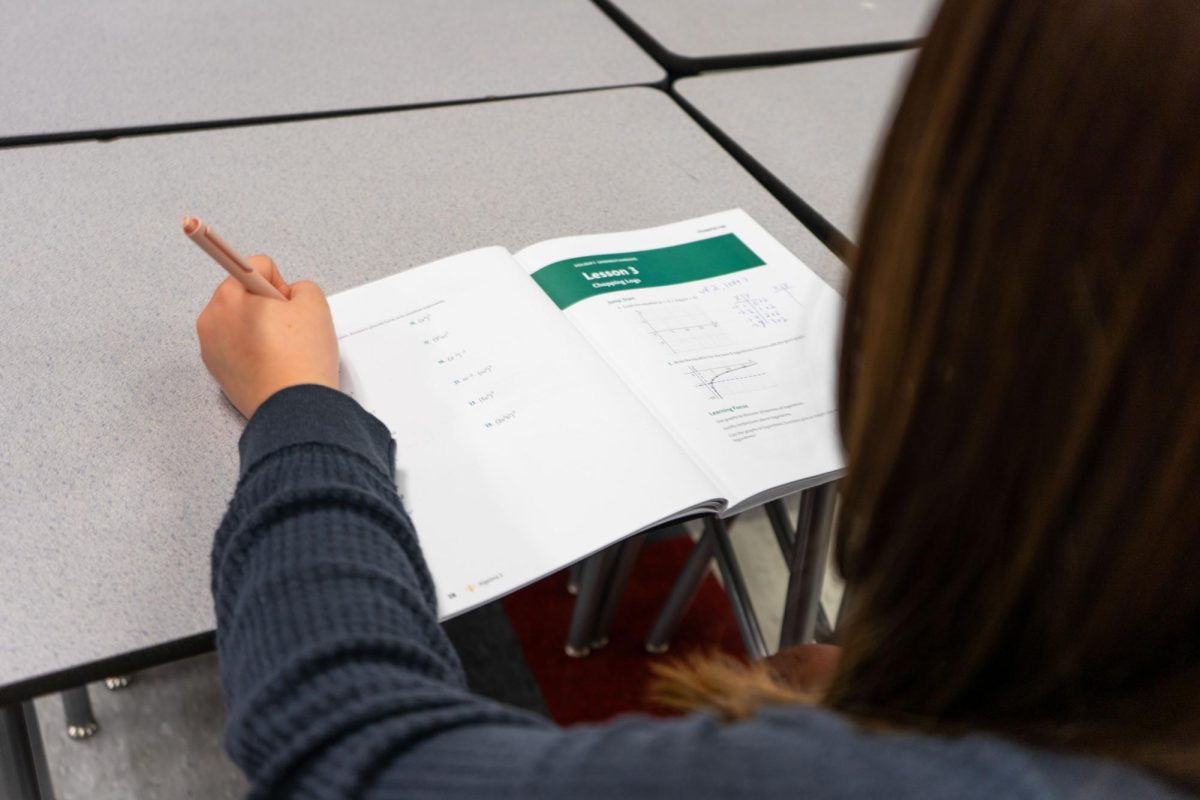For the first time in over 11 years, Rogers Public Schools has adapted a new curriculum for Algebra 1, Algebra 2, and Geometry courses, causing difficulties for students, especially for upperclassmen who haven’t learned with the curriculum before.
This year Arkansas state government requires that all school districts have a high quality instructional material (HQIM). The Rogers district examined the options for the new curriculum and decided that the best one is Open Up Resources, which is what students have been working with in their math classes since August. With this sudden change, even the teachers only got the workbooks roughly a month before students did, making them learn with us.
“This first year is a difficult concept to wrap my brain around because it is so differently set up than what I’m used to,” said algebra teacher Jami Bice. “From what I have seen so far, it circles through and shows you the process on how to get from one [skill] to the other, and as I’m going through the [lessons] to come, I see that what we’re doing [now] is going to make some of that easier.”
Another huge struggle with this change is students like myself midway through high school having to adjust to this new curriculum. The only students who truly aren’t affected by this are students in Algebra 1, since this is a fresh start to math for them. However, students in Geometry and Algebra 2 are expected to follow a brand new way of learning in a program that assumes you’ve been taught this way before.
“[The curriculum] circles through Algebra 1, Geometry, and Algebra 2, and some of us [are] starting in Algebra 2. They’re referring back to things you learned in Algebra 1 [with] their curriculum and [these students] didn’t have that exact learning,” said Bice. “I see a struggle with upperclassmen because I know there are gaps [in the way they were taught previously compared to this new way].”
Having to adjust to this new way of learning while dealing with other classes like AP courses and extracurriculars makes life a lot harder on students.
“I’ve been struggling because [this isn’t the] way I’ve done math through all my years of schooling. This [new curriculum] really transformed [math for me] and it’s hard because I started doing five college courses, and managing all those higher level classes, as well as this class, I wasn’t expecting it to be this hard,” said Presli Sickels (11). “I’ve cried multiple times, and I just feel kind of defeated, but I’ve learned to adapt to this new way of learning.”
Rachel Royal, the math academic coach at Heritage, says that the administration predicted some students would struggle with the change.
“We knew coming in that that was going to be an [issue], and so we talked to teachers to have what we call pull-outs, which are meetings where we look at what’s coming and also look at support [strategies] that teachers can do to help you [succeed],” said Royal. “This curriculum is new to us too, so we’re having to work through it and see how it goes, and every year will get better. But we’re trying our best to do what we can to help bridge some of those gaps.”
I think introducing this curriculum to students so abruptly was not helpful to our academic success. However, I do believe that with time and patience this new curriculum will become easier to comprehend.







